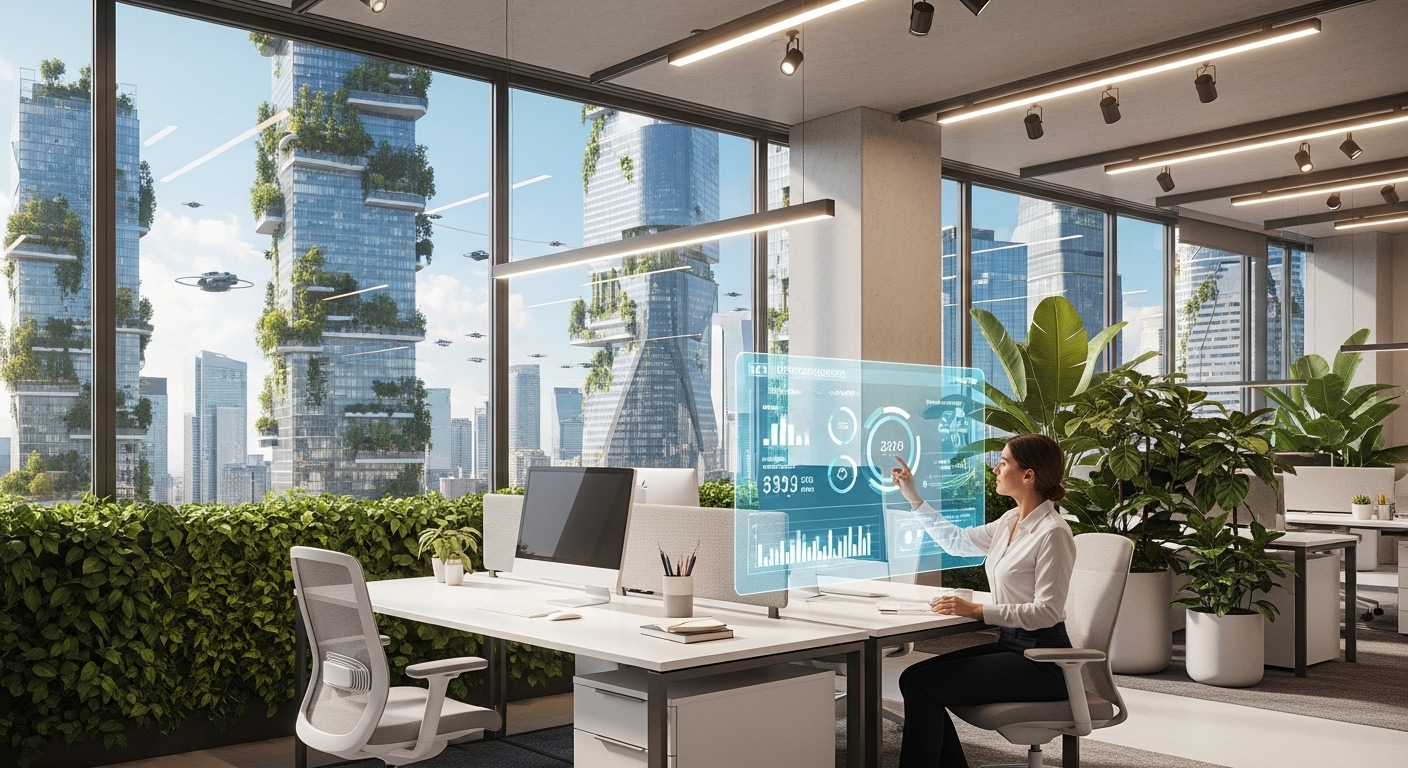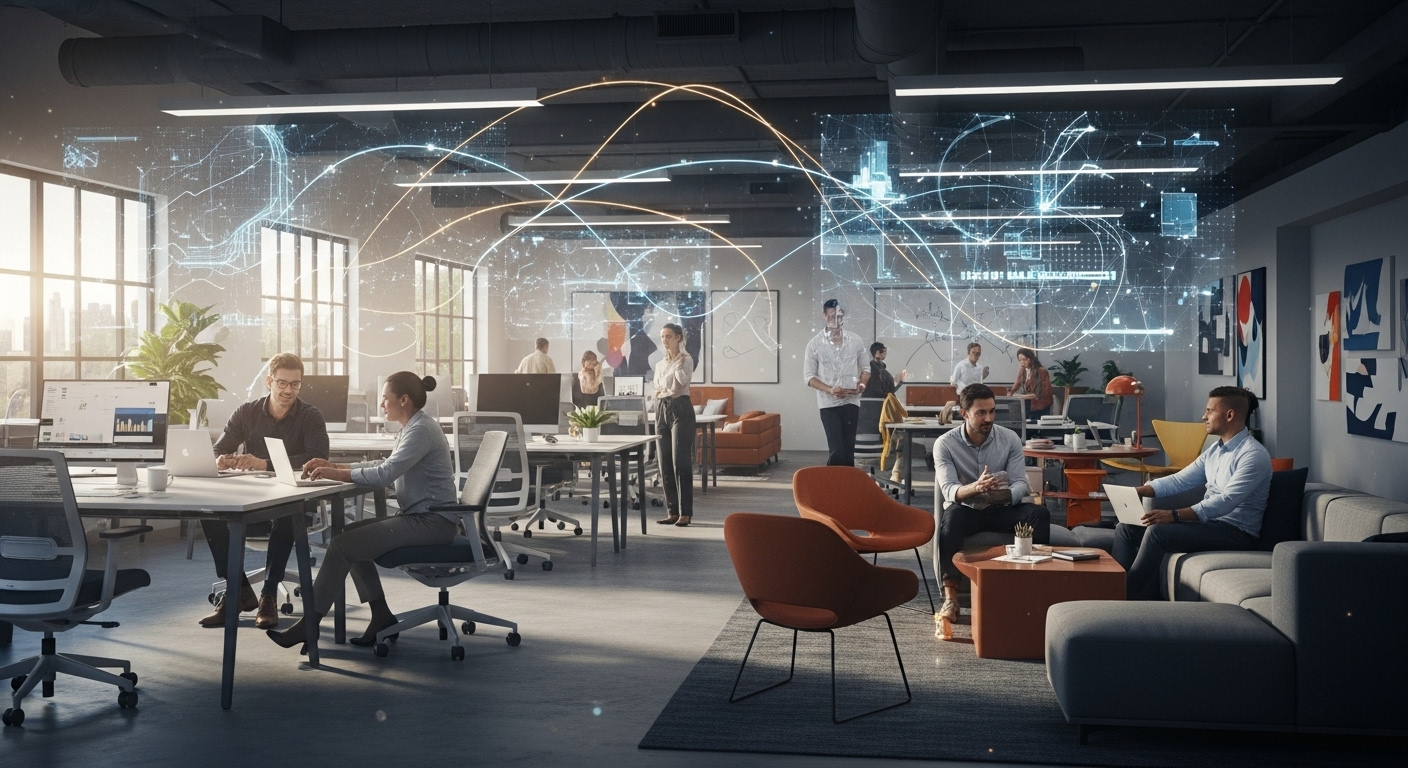In the evolving landscape of work, the office is no longer just a physical space; it’s an experience. The dream of a seamless workday—where the environment anticipates your needs, resources are readily available, and operational snags disappear—is fast becoming a reality. This is the promise of the smart office, a workspace powered not by isolated gadgets, but by a cohesive, intelligent ecosystem. Moving beyond smart lightbulbs and automated thermostats, today’s smart office technology integrates Internet of Things (IoT) devices, AI-driven analytics, and user-centric platforms to create environments that are more productive, efficient, and enjoyable. This guide provides a practical, step-by-step roadmap for navigating this transformation, helping you integrate the right technology to build a truly frictionless future for your team.
The building blocks of a truly smart office
To construct an effective smart office, it’s crucial to understand its foundational components, which extend far beyond individual smart devices. The core of this ecosystem is integration. The first building block is a robust network of Internet of Things (IoT) sensors. These are the digital senses of the building, collecting real-time data on everything from room occupancy and air quality to temperature and light levels. They are embedded in desks, meeting rooms, lighting fixtures, and HVAC systems, providing a constant stream of information about how the space is being used. The second essential component is a centralized management platform. This software acts as the brain of the operation, ingesting data from all the disparate sensors and systems. It allows facility managers and IT teams to monitor, manage, and automate the entire environment from a single dashboard. This platform is where raw data is translated into actionable insights, such as identifying underutilized meeting rooms or adjusting climate control based on real-time occupancy. Finally, none of this is possible without a powerful and secure connectivity backbone. This includes high-speed Wi-Fi 6 for reliable device connection and, increasingly, 5G for its low latency and high bandwidth, ensuring that the thousands of data points are transmitted and processed without delay. Together, these three elements—sensors, platform, and connectivity—form the infrastructure upon which a truly responsive and intelligent workplace is built.
Enhancing the employee experience through personalization
The ultimate goal of a smart office is not just efficiency, but creating a human-centric environment that empowers employees to do their best work. Smart technology is a powerful tool for achieving this through deep personalization. Imagine an employee arriving at the office and their pre-booked desk automatically adjusts to their preferred height and lighting settings. This is possible through integrated apps and user profiles that connect the individual to their environment. Smart booking systems eliminate the frustrating search for an available desk or meeting room. Using a mobile app, employees can see real-time floor plans, find available spaces, and book them instantly. This same system can guide them to their reserved spot using indoor navigation. Access control also becomes frictionless. Instead of fumbling for keycards, employees can use their smartphone or even biometric recognition to seamlessly move through the building. This technology can also be used to grant temporary access to visitors, enhancing security and convenience. Environmental controls are another key area for personalization. Sensors can monitor air quality, CO2 levels, and temperature, automatically adjusting HVAC systems to maintain an optimal, healthy environment. Some advanced systems even allow employees to control the temperature and lighting in their immediate zone via an app, giving them a sense of control and comfort that directly impacts well-being and productivity.
Driving operational efficiency and sustainability
While enhancing the employee experience is paramount, smart office technology also delivers significant returns on investment through major gains in operational efficiency and sustainability. One of the most immediate impacts is on energy consumption. Smart lighting systems with occupancy sensors ensure that lights are only on in areas that are actively being used, and they can adjust brightness based on the amount of natural daylight available. Similarly, smart HVAC systems linked to occupancy data can heat or cool zones dynamically, avoiding the massive energy waste of conditioning empty floors or meeting rooms. This not only reduces utility bills but also significantly lowers the building’s carbon footprint. Predictive maintenance is another major benefit. By placing sensors on critical equipment like elevators, HVAC units, and plumbing systems, facility managers can monitor performance in real time and receive alerts about potential failures before they happen. This proactive approach prevents costly emergency repairs and minimizes downtime that could disrupt business operations. Even resource management becomes more intelligent. For instance, smart waste bins can signal when they need to be emptied, allowing cleaning staff to optimize their routes. Data on space usage can also inform cleaning schedules, concentrating efforts on high-traffic areas while reducing service to those less frequently used, saving both time and resources.
Unlocking insights with space utilization analytics
Perhaps the most transformative aspect of a smart office is its ability to generate vast amounts of data about how the workspace is actually used. This data, when properly analyzed, provides invaluable insights that can inform strategic decisions about real estate, office design, and resource management. Occupancy sensors, both at individual desks and in larger zones, can reveal patterns of use throughout the day, week, and month. This helps businesses answer critical questions: Are we using our real estate portfolio effectively? Do we have too many large meeting rooms and not enough small collaboration pods? Which areas of the office are most popular, and what can we learn from their design? These insights are crucial in the age of hybrid work. By understanding peak occupancy days and how different teams use the space, companies can right-size their office footprint, potentially reducing expensive lease commitments without sacrificing productivity. Space utilization analytics also allows for dynamic resource allocation. If data shows that a particular department consistently needs more collaborative space on Tuesdays, the facilities team can proactively reconfigure flexible furniture arrangements to meet that demand. This data-driven approach replaces guesswork with evidence, enabling organizations to create a more efficient, responsive, and cost-effective workplace that truly aligns with the needs of its people.
Navigating the security and privacy landscape
Integrating thousands of internet-connected devices into a corporate environment creates a new and complex set of security and privacy challenges. Each IoT sensor, smart lock, and connected camera represents a potential entry point for malicious actors, making a robust cybersecurity strategy non-negotiable. The first line of defense is network segmentation. This practice involves creating separate, isolated networks for different types of devices. For example, the IoT sensors for lighting and HVAC should be on a different network from the one handling sensitive corporate data. This ensures that even if one sensor is compromised, the breach is contained and cannot spread to critical business systems. Strong encryption protocols for all data, both in transit and at rest, are also essential. Furthermore, regular security audits and firmware updates for all connected devices are required to patch vulnerabilities as they are discovered. Beyond cybersecurity, there is the critical issue of employee privacy. While collecting data is necessary for a smart office to function, it must be done transparently and ethically. It’s vital to anonymize data wherever possible, focusing on collective patterns rather than individual tracking. Clear policies must be established and communicated to employees, outlining what data is being collected, why it’s being collected, and how it will be used. Building trust is key; employees need to understand that the technology is there to improve their work experience, not to monitor their every move. Failing to address these security and privacy concerns can undermine the entire smart office initiative.
A practical roadmap for smart office implementation
Successfully transitioning to a smart office requires a thoughtful, phased approach rather than a large-scale, disruptive overhaul. The first step is to clearly define your goals. Are you primarily focused on reducing energy costs, improving space utilization, or enhancing employee experience? Your objectives will determine your priorities and technology choices. Step two is to conduct a thorough audit of your existing infrastructure. Assess the capabilities of your current network, building management systems, and security protocols to identify gaps that need to be addressed. Once you have a clear picture, the third step is to start with a pilot project. Instead of trying to outfit the entire building at once, choose a single floor or a specific area to test your chosen technologies. This allows you to learn, gather feedback from employees, and prove the ROI on a smaller scale. Step four involves selecting an integrated platform. Avoid the temptation to piece together solutions from multiple vendors, which can lead to compatibility issues. Look for a scalable, open platform that can integrate with a wide range of devices and systems, giving you flexibility for the future. The final step is to scale and iterate. Using the insights from your pilot, you can begin a phased rollout across the organization. It’s important to remember that a smart office is not a one-time project; it’s an evolving ecosystem. Continuously collect data, solicit feedback, and adapt your strategy to meet the changing needs of your business and your people.
Conclusion
The transition to a smart office represents a fundamental shift in how we view the workplace—from a static container for work to a dynamic partner in its execution. By moving beyond isolated gadgets and embracing an integrated ecosystem of sensors, platforms, and analytics, organizations can create environments that are not only more efficient and sustainable but also more responsive to the needs of their employees. The journey begins with a clear strategy, focusing on foundational building blocks like robust connectivity and a central management platform. From there, the benefits cascade: a personalized and frictionless employee experience boosts well-being and productivity, while data-driven operational efficiencies and space optimization deliver tangible ROI. While navigating the critical challenges of security and privacy is essential, a well-planned, phased implementation can de-risk the process and ensure success. The frictionless future is not a distant concept; it’s being built today. By strategically integrating smart technology, businesses can create workplaces that empower their teams, optimize their resources, and position themselves as leaders in the future of work.





